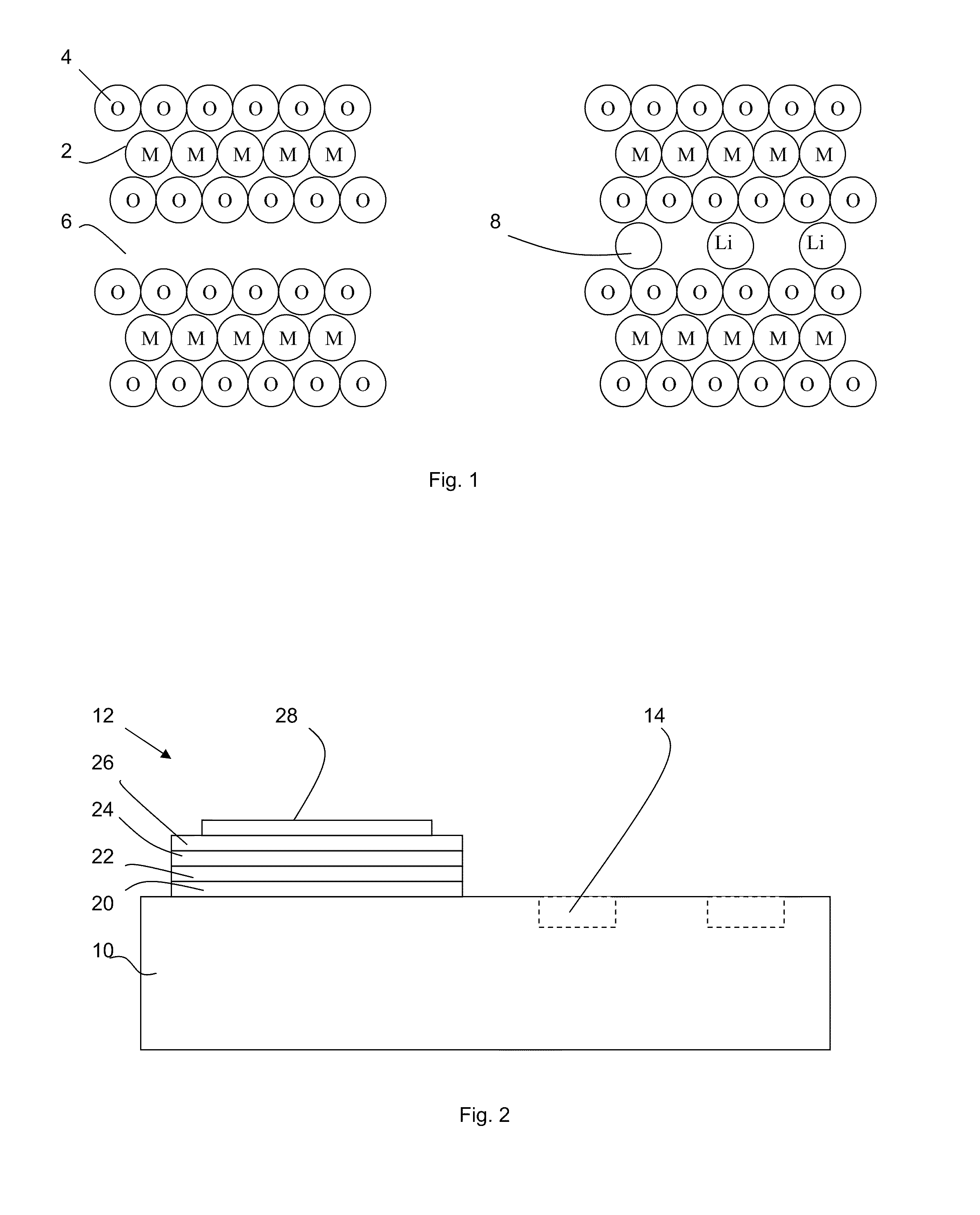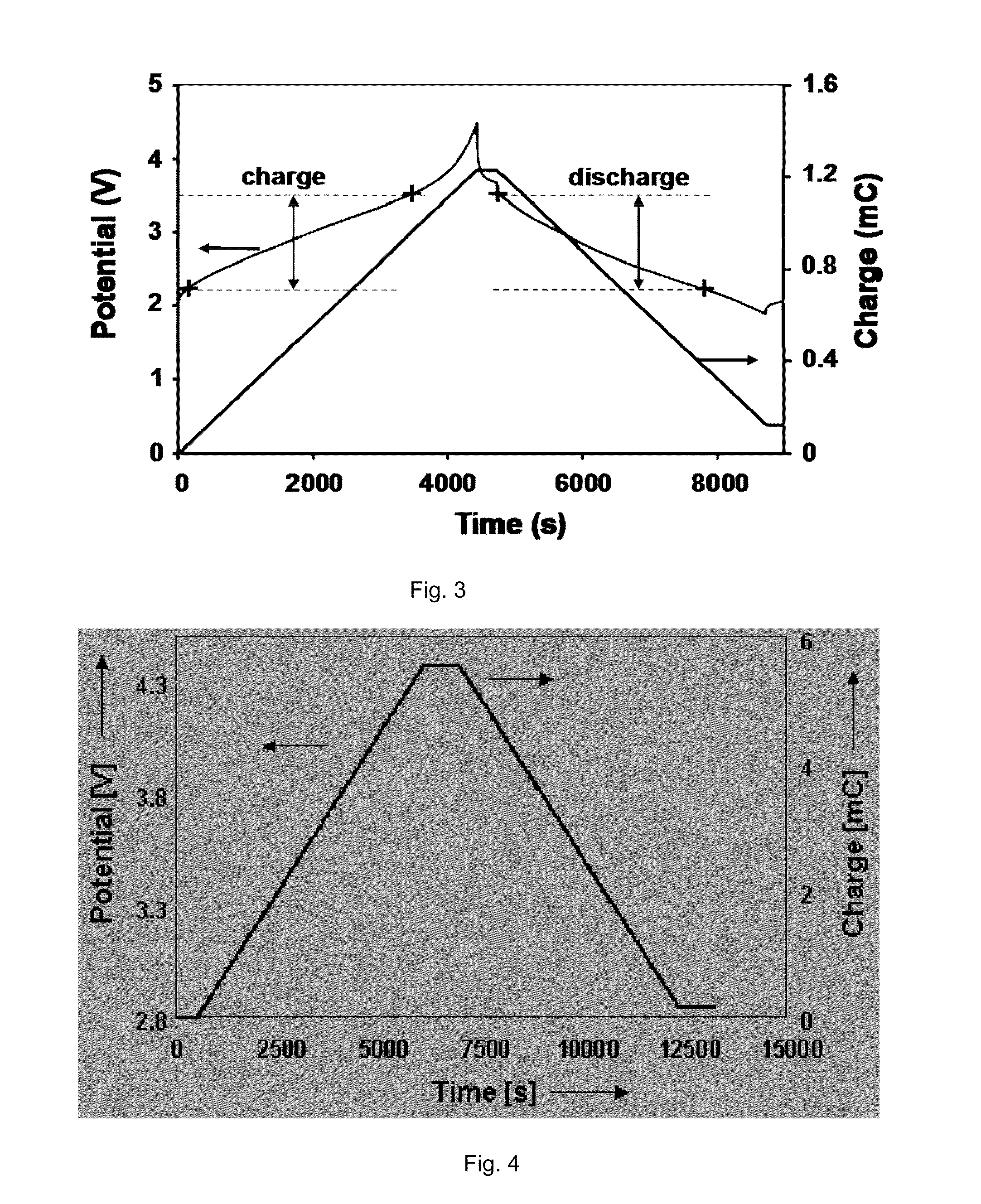High density capacitor
a capacitor and high density technology, applied in the field of high density capacitors, can solve the problems of not being suitable for high frequency decoupling, not being suitable for capacitors, etc., and achieve the effects of reducing or eliminating discrete voltage steps, large capacitance density, and increasing the capacitance density of integrated devices
- Summary
- Abstract
- Description
- Claims
- Application Information
AI Technical Summary
Benefits of technology
Problems solved by technology
Method used
Image
Examples
Embodiment Construction
[0031]FIG. 2 shows a first embodiment of an electrochemical capacitor arrangement according to the invention.
[0032]A semiconductor substrate 10 has an electrochemical capacitor 12 formed on the same substrate as semiconductor devices 14. Note that the electrochemical capacitor also works stand-alone on other substrates 10 without semiconductor devices.
[0033]The electrochemical capacitor comprises a diffusion barrier layer 20, which may also function as an adhesion layer and / or a protection layer or even a current collector layer to avoid high Ohmic current paths. In the example shown, this diffusion barrier layer 20 is provided on a layer of silicon dioxide (not shown) on the substrate surface but in alternative embodiments the diffusion barrier layer 20 may be formed on the substrate.
[0034]Suitable materials for the diffusion barrier layer include titanium nitride (TiN), titanium oxide (TiO2), aluminium oxide (Al2O3), tantalum oxide (TaOx) or tantalum nitride (TaN).
[0035]A lower el...
PUM
| Property | Measurement | Unit |
|---|---|---|
| thickness | aaaaa | aaaaa |
| thickness | aaaaa | aaaaa |
| temperature | aaaaa | aaaaa |
Abstract
Description
Claims
Application Information
 Login to View More
Login to View More - R&D
- Intellectual Property
- Life Sciences
- Materials
- Tech Scout
- Unparalleled Data Quality
- Higher Quality Content
- 60% Fewer Hallucinations
Browse by: Latest US Patents, China's latest patents, Technical Efficacy Thesaurus, Application Domain, Technology Topic, Popular Technical Reports.
© 2025 PatSnap. All rights reserved.Legal|Privacy policy|Modern Slavery Act Transparency Statement|Sitemap|About US| Contact US: help@patsnap.com



